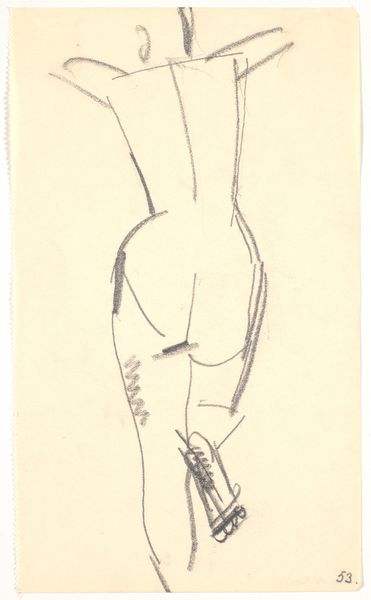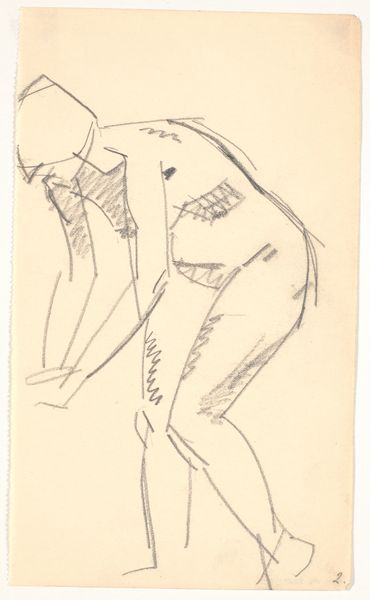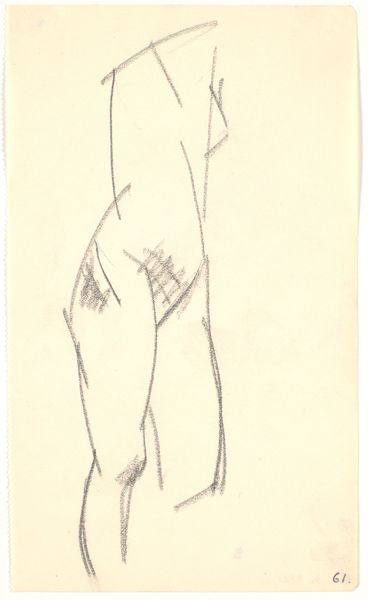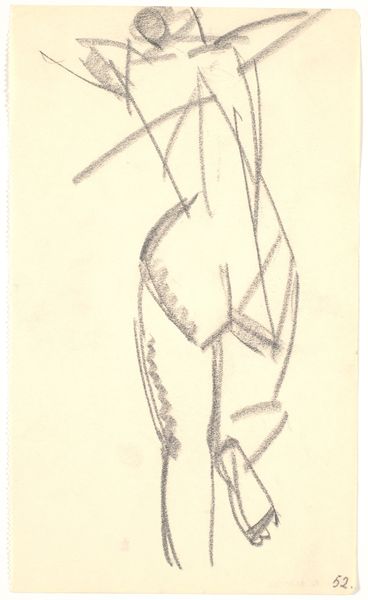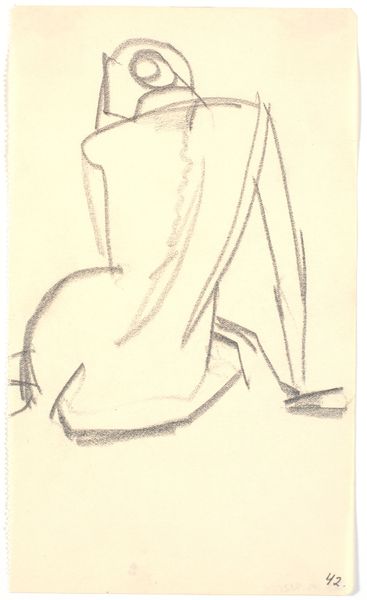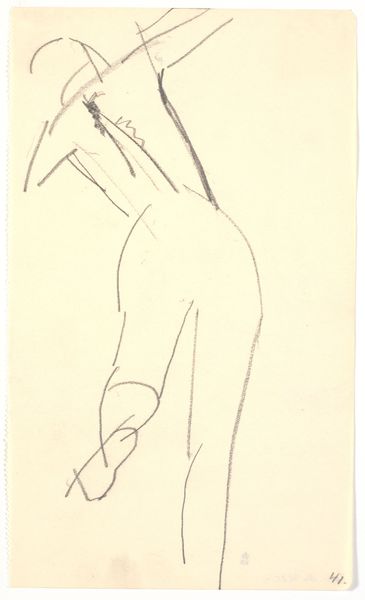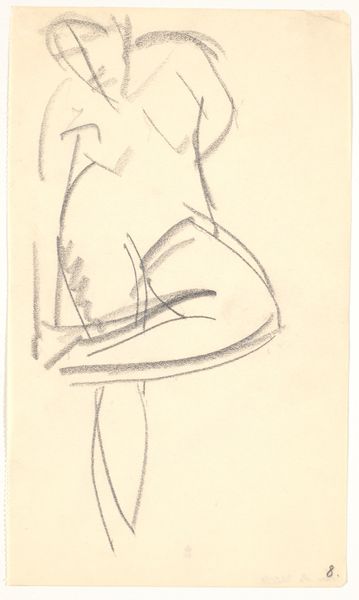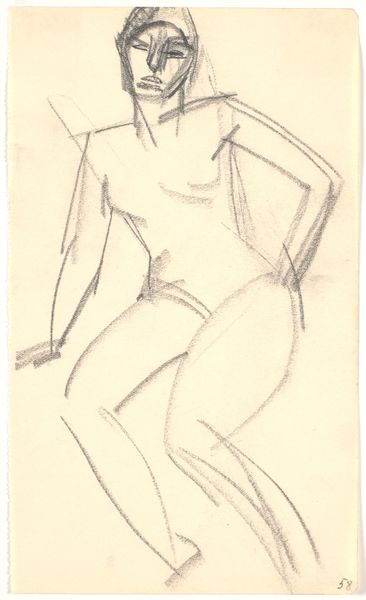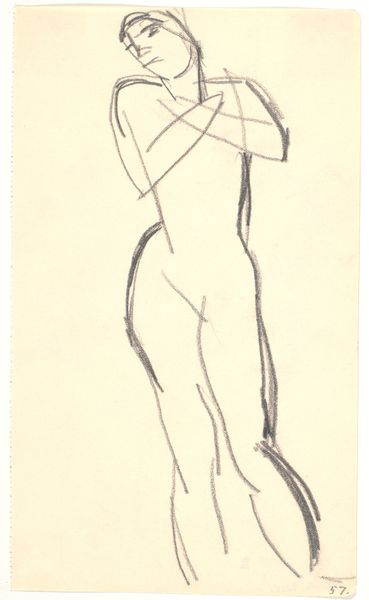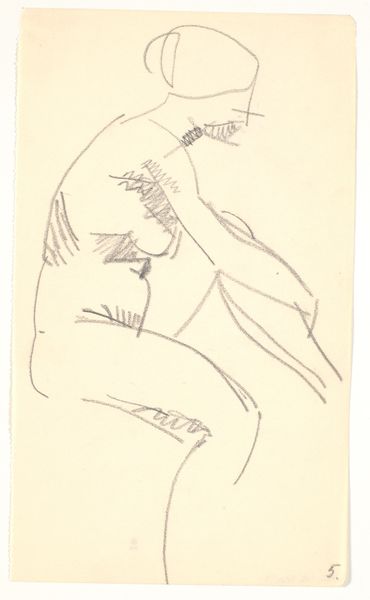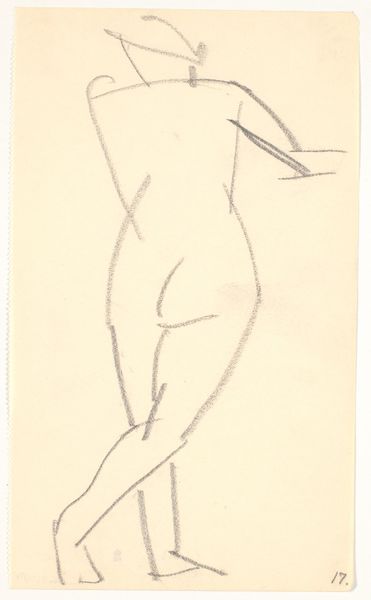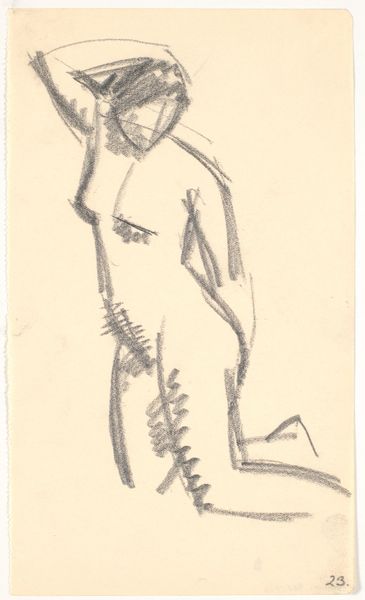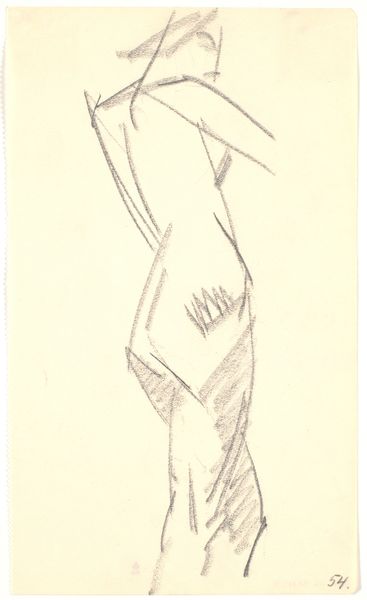
drawing, graphite
#
portrait
#
drawing
#
figuration
#
expressionism
#
graphite
Dimensions: 209 mm (height) x 124 mm (width) (bladmaal)
Editor: This is a rather spare drawing. The visible graphite markings create a feeling of profound yet incomplete tension. Curator: Indeed. What we see here is Karl Isakson's "Kneeling Model," dating from around 1914-1915. Currently it resides in the collection of the SMK, the Statens Museum for Kunst. Editor: Graphite offers such versatility. Isakson really teases out subtle shifts in tone and density of line to establish volume and form, wouldn't you say? The visible strokes give a palpable sense of his working process. Curator: Precisely. Look at the economy of line used to define the figure’s contours, especially around the back and shoulders. The composition employs what appears to be an almost brutal simplification of form. One can see expressionist tendencies. Editor: I’m struck by how the drawing embodies labor. It is clear the artist’s hand and energy shaped the entire composition, raw materiality providing more depth to a seemingly simplistic rendition of a kneeling figure. It highlights the human form with its deliberate, artistic rendering. Curator: Interesting observation. If we analyze further, the lines could denote not only physical form but perhaps a psychological landscape too. It's compelling that even in its incompleteness, there’s an emotional narrative unfolding before us, mediated by form and composition. Editor: The unfinished nature may highlight more the medium itself rather than obscuring it with layers of paint, for example, or striving for some impossible perfection. The paper remains exposed, adding to the frankness of the artwork, in my opinion. Curator: Yes. We find ourselves positioned as direct observers of the artistic process. Its emotional accessibility rests firmly on its formal qualities, wouldn’t you agree? Editor: Without a doubt. Considering Isakson's technique and the tangible process of creation allows for an insightful aesthetic experience for the observer. Curator: It offers indeed another way to view art where technique gives context to expression, transforming our understanding.
Comments
No comments
Be the first to comment and join the conversation on the ultimate creative platform.

